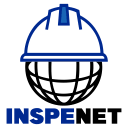Canadian company D-Wave has positioned itself as the first commercial vendor to demonstrate that a quantum computer can outperform a classical supercomputer on a practical, real-world problem. The experiment involved solving a complex simulation model of magnetic materials , a task considered insurmountable even for the most advanced GPU-based systems.
Quantum Simulation: A New Computational Frontier
During the test, the researchers used an Advantage2 quantum annealing system to study the quantum dynamics of spin glasses. These types of problems have direct applications in materials science, such as the development of new magnetic components for use in medical imaging, power grids, and electronic devices .
The most complex simulation was solved in minutes , while a supercomputer like Oak Ridge National Lab’s Frontier would require centuries and an electrical consumption comparable to the annual power consumption of all humanity.
Efficiency and scalability with a quantum computer
The Advantage2 quantum annealing system demonstrated substantial improvements in qubit coherence and scalability, enabling it to tackle more complex problems with lower power consumption. The prototype version used in the research has already surpassed the current model, available on D-Wave’s Leap cloud, in performance.
The demonstration isn’t limited to the academic field. D-Wave has deployed its quantum approach in industrial environments such as Ford Otosan, optimizing logistics processes on assembly lines with results up to six times faster than traditional methods.
On the other hand, the company has also worked with pharmaceutical companies to generate molecular structures using language models trained with hybrid quantum-classical computing.
Towards a new paradigm in scientific discovery
Experts from institutes such as ETH Zurich, MIT, and the Complutense University of Madrid have emphasized that this result, published in the journal Science , marks a turning point in applied quantum research . By validating that quantum annealing can simulate interactions impossible for traditional computers, it opens the door to a generation of discoveries that were previously impossible.
This company’s quantum computing has ceased to be a promise and has become an active tool in solving problems with a tangible impact on industry and science.
Follow us on social media and don’t miss any of our posts!
YouTube LinkedIn Facebook Instagram X (Twitter) TikTok
Source and photo: D-Wave


